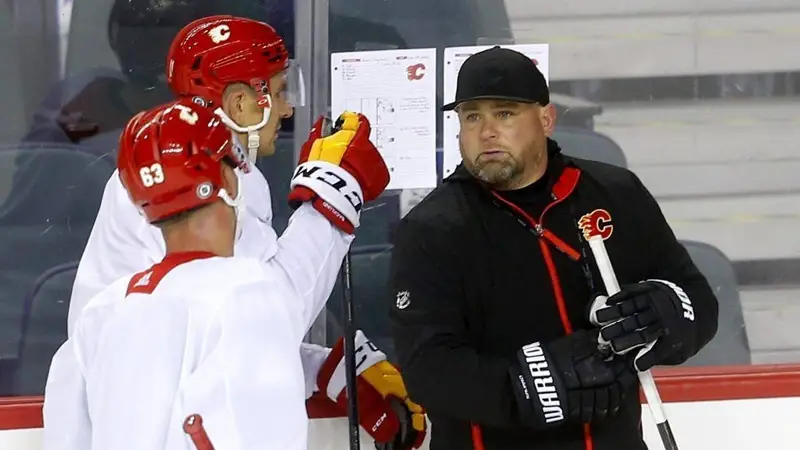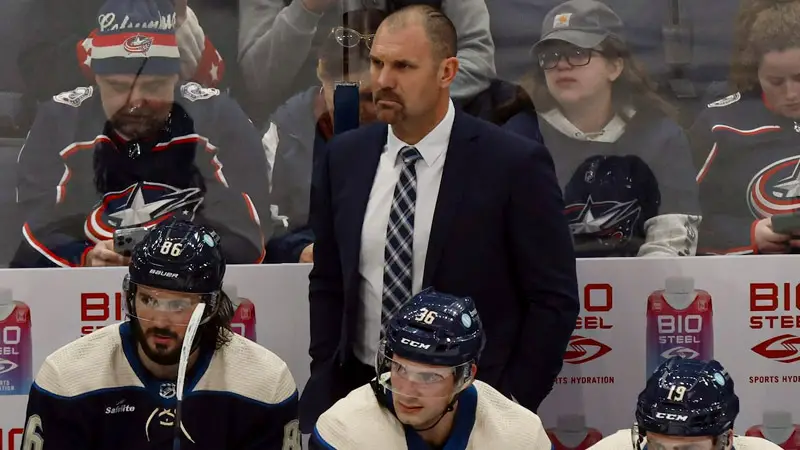The NHL Coach’s Challenge is a system implemented a few years ago, enabling coaches to contest certain calls made by on-ice officials.
This system aims to ensure fairness and accuracy, though it has sparked debate among fans and players alike. This comprehensive guide explains the Coach’s Challenge, its evolution, types, consequences, and statistics.
How the Coach’s Challenge Works?
The Coach’s Challenge is a system implemented in professional basketball leagues, such as the NBA and WNBA, that allows coaches to contest certain calls made during games.
This mechanism aims to enhance fairness and accuracy in officiating by enabling teams to request a review of specific plays.
Initiating a Challenge
To initiate a challenge, the head coach must:
- Call a Timeout: A legal timeout must be called immediately after the contentious call.
- Signal for Review: The coach signals for a challenge by twirling an index finger towards the referees, indicating the specific call being contested.
Reviewable Events
Coaches can challenge calls related to:
- Personal fouls against their own team.
- Out-of-bounds violations.
- Goaltending or basket interference violations.
However, in the final two minutes of the fourth quarter and overtime, only officials can trigger reviews for out-of-bounds violations and goaltending calls
Timeout Implications
- If the challenge is successful, the team retains its timeout.
- If unsuccessful, the team loses the timeout used to initiate the challenge.
- A team must have at least one timeout available to initiate a challenge; otherwise, they incur a technical foul for an excessive timeout
Consequences of Challenges
The Coach’s Challenge system, used in leagues like the NHL and NBA, carries significant implications for teams that choose to contest calls made by officials.
Understanding these consequences is crucial for coaches and players as they navigate the strategic aspects of the game.
Failed Challenges

Unsuccessful challenges result in a minor penalty for delay of game. This change from the previous timeout penalty system is significant.
While teams don’t lose a timeout anymore, the delay of game penalty can be a crucial turning point, impacting the game’s momentum and potentially leading to a goal for the opposing team.
The Importance of Strategy
Given the consequences, coaches must strategize carefully before challenging. The success rate for challenges is not high, with only 33.3% being upheld in the 2022-2023 season.
Teams need to weigh the potential benefits against the risks, considering factors like the strength of the opposing team’s powerplay and the game situation.
Types of Challenges
In professional sports, particularly in leagues like the NHL, NBA, and WNBA, the Coach’s Challenge allows coaches to contest specific calls made by officials.
Each league has its own set of rules regarding what can be challenged. Here’s a breakdown of the types of challenges available in these leagues:
Offside Challenges
These challenges occur when a coach believes a linesman missed an offside, leading to a goal. If the review confirms the offside, the goal is disallowed, and play resumes from the point of the infraction.
For a play to be considered offside, the player’s skates must fully cross the blue line before the puck.
Goaltender Interference Challenges
When a coach believes the opposing team interfered with the goalie, resulting in a goal, they can challenge for goaltender interference.
If the review confirms interference, the goal is disallowed. Goaltender interference happens when a player obstructs the goalie’s movement within the crease.
However, if the goalie is outside the crease, incidental contact with opposing players might not be considered interference.
Stoppage of Play Challenges
This challenge addresses situations where a play in the offensive zone should have been whistled dead but wasn’t.
This includes instances like a high-sticked puck, hand passes, or a puck hitting the netting outside of play. This rule change was introduced to address the frequency of such missed calls.
The Role of Video Reviews
Video reviews, utilizing iPads and other advanced technology, are central to the challenge process.
They allow officials to review the play from multiple angles and in slow motion, enhancing accuracy and leading to fairer decisions. The NHL Situation Room in Toronto assists referees during the review process.
Subjectivity in Reviews
Despite technological advancements, video reviews aren’t always conclusive. Referees’ interpretation and discretion still play a role, particularly in calls like goaltender interference, which lack the clear-cut nature of offside or high-sticking calls.
Disagreements and controversies can still arise, highlighting the subjective element inherent in certain calls.
The Officials’ Role
Officials play a crucial role in sports by ensuring that competitions are conducted fairly, safely, and according to established rules.
Their responsibilities encompass various aspects, including leadership, safety, communication, and enforcement of rules.
Referee Involvement
Referees make the final decision on challenges relating to goaltender interference and offensive zone mistakes.
They can also initiate a review if they suspect a goal was scored illegally. They collaborate with the NHL’s Situation Room in Toronto during the review process.
Linesmen Responsibilities
Linesmen focus on calls related to offside and icing. They are responsible for ensuring players adhere to these rules throughout the game, and any missed calls by linesmen can be subject to a coach’s challenge.
The Evolution of the Coach’s Challenge
The evolution of the coach’s challenge in professional sports has significantly transformed how games are officiated, enhancing fairness and accuracy in critical decision-making.
This mechanism, first introduced in the NHL, has since been adopted and adapted by various leagues, including the NBA.
Changes and Impact
Since its inception in the 2015-2016 season, the Coach’s Challenge has evolved significantly. Initially limited to goaltender interference and offside calls, it now encompasses a wider range of situations.
The introduction of iPads for video review has streamlined and improved the process. The penalty for unsuccessful challenges has also shifted from the loss of a timeout to a two-minute minor penalty.
This change has led to fewer challenges and a higher success rate, as coaches are now more selective about using their challenges.
Future Prospects
The Coach’s Challenge remains a subject of ongoing discussion. While it enhances accuracy and addresses missed calls, some argue that it disrupts the game’s flow.
It remains to be seen how the system will further evolve in the future, balancing the need for accuracy with the desire to maintain the pace and excitement of the game.
Conclusion
The NHL Coach’s Challenge has become an integral part of the game, contributing to fairer officiating and addressing human error in real-time.
While controversies and debates continue, the system’s evolution reflects the league’s commitment to leveraging technology and refining rules to ensure a more accurate and engaging game for fans and players alike.





James Felix